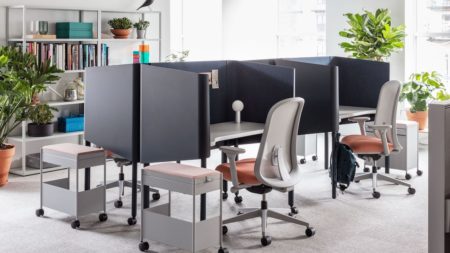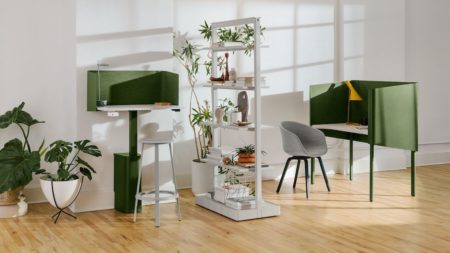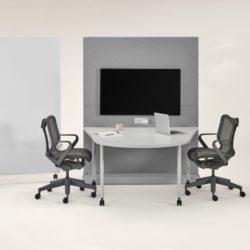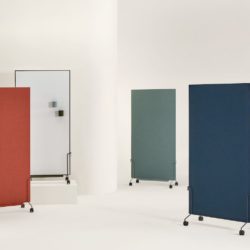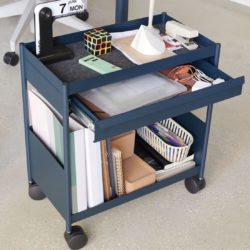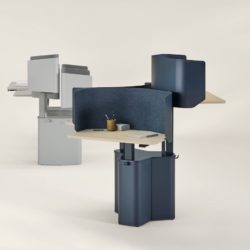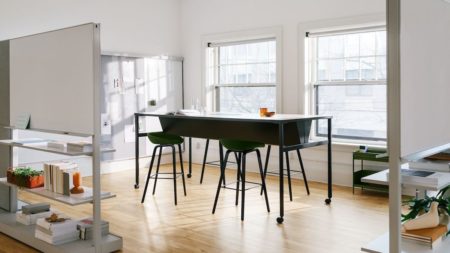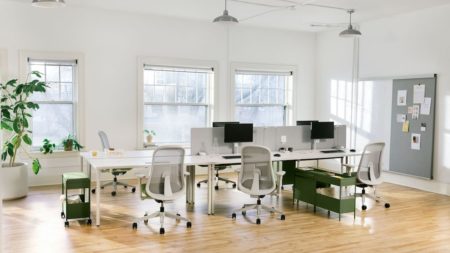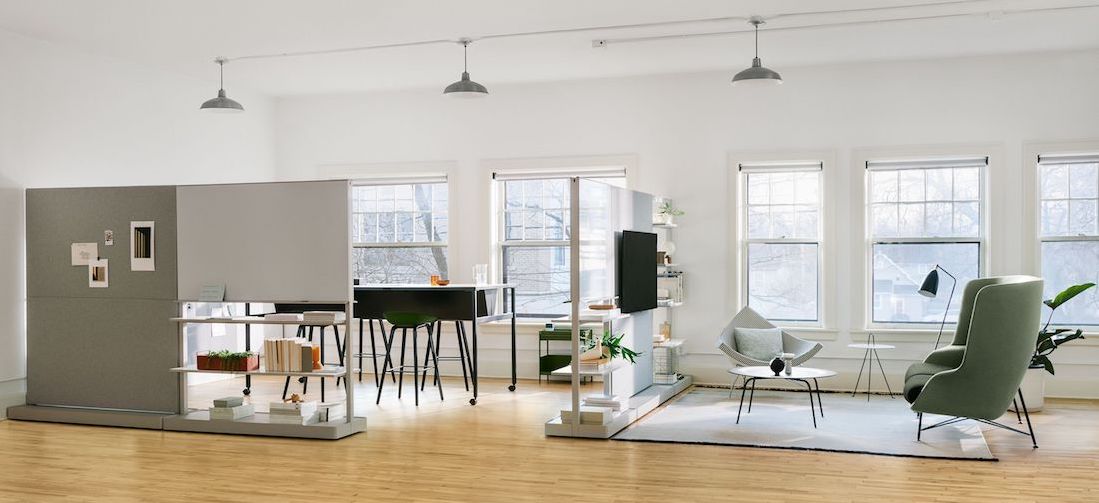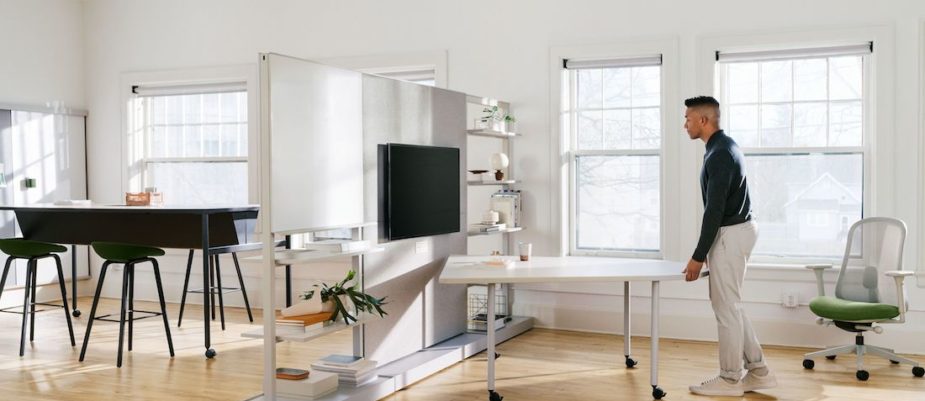
Herman Miller recently presented in the US the latest office furniture collection OE1, created in collaboration with designers Sam Hecht and Kim Colin of Industrial Facility.
It was designed as an “un-system” to meet the new needs of maximum reconfigurability of the post-pandemic workplace.
It allows people to experience space, to find out which solution works best at a given moment, but can quickly transform as needs change.
It will be available in Europe starting next autumn.
It is a dynamic time for Herman Miller, despite the moment of uncertainty that the world is going through. The sensational acquisition of Knoll follows very shortly after the launch of the new showroom at Fulton Market in Chicago, an amazing stage for the official presentation of OE1, the new collection of furniture designed for the post-pandemic workplace.
“While this project was started prior to the pandemic, our research over the last year has only intensified our belief in the relevance of this line,” says Ryan Anderson of Global Research and Insights at Herman Miller. “With people forced to work outside of offices, traditional means of workplace planning have been challenged by the unpredictability of how people will work now and in the future. These changes will continue, and workspaces need to constantly adapt. Workers are ready for a greater degree of variety, choice, and control; people want their environments to work for them, and OE1 is designed to enable that.”
OE1 is a collection of essential pieces that embraces the unpredictability of the future by landing squarely at the crossroads of agility, functionality, and modularity.
It offers a wide range of items that can be used to create highly varied work settings yet are flexible enough to adapt to growth, new needs or desires.
If directly responds to how and where people want to work, encouraging a reexamination of traditional workplace design while allowing employees to build, test, and recreate their spaces. By enabling people to experiment with space, employees will gain confidence as they can not only discover solutions needed in the now, but also adjust rapidly if needed. OE1 mitigates the risk of an uncertain future for organizations yet empowers employees to create optimal spaces to suit their work.
“OE1 puts the power of workplace reconfiguration in the employees’ hands” says Malisa Byrant, Senior Vice President and General Manager of Global Workplace at Herman Miller. “This is a huge benefit for both the organization and the employees. For the organization, it provides a high degree of assurance that their workspaces will remain productive, relevant, and desirable over the life of the building without spending vast sums on facility reconfigurations. For the employee, it signals that the space is in service to them”
“One thing we noticed is that day one, the furniture is installed; and day two, things need to be changed. When you zoom out to a macro view, you become aware of the magnitude and pace of ongoing change. So OE1 is more like an un-system; it’s playing by different rules that address these scalar changes.” says Sam Hecht.
“OE1 offers choice, is flexible, and can adapt so that individuals (not just organizations) get to experience these qualities directly,” says Kim Colin. “Our challenge was to invent something completely new while also making it recognizably useful. OE1 is designed so that everything is having a conversation with each other, and the conversation is healthy.“
Used as individual pieces or the entire collection, OE1 creates flexible, fluid environments that can easily adapt to shifting goals and personal preference.
Mobile desks and tables that can be pulled together for a benching application and then separated into solo workstations (Rectangular Table); tables on wheels, square for teamwork (Project Table) or non-orthogonal for physical and virtual meetings (Huddle Table); agile walls to divide space, create boundaries and share ideas (Agile Wall); height-adjustable sit-stand workstation (Micro Pack); high touchdown tables for standing or sitting on stools (Communal Table); individual workstations with acoustic and visual privacy (Nook); personal storage with a minimal design (Storage Trolley); whiteboards on wheels or wall-mounted (Mobile Easel, Rail and Board); movable desk screens and many other accessories.
A myriad of adaptable products to offer the right solution, whatever happens, expected or unexpected.

